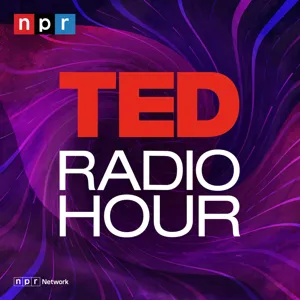Podcast Summary
Exploring the World of Coral Reefs with Capital One Venture X Card and AutoTrader: Discover unlimited miles with the Capital One Venture X Card, shop for your dream car on AutoTrader, and learn about the importance of coral reefs.
The Capital One Venture X Card is a valuable tool for earning unlimited miles on purchases and enjoying premium travel benefits, while AutoTrader makes car buying a breeze with its vast selection of options. Meanwhile, in a 2012 episode of Stuff You Should Know, Josh and Chuck discussed the fascinating world of coral reefs, emphasizing their importance and the need to learn about them. Josh, who is a certified scuba diver, shared his experiences diving near the second largest barrier reef. In terms of health, Josh and his partner Yumi both take extensive vitamins and supplements to maintain their well-being.
Discovering the Hidden Wonders of Coral Reefs: Coral reefs are vast ecosystems teeming with life, economically valuable, protect beaches, and are formed by tiny, sessile creatures with algae in their cells
Coral reefs, specifically the Great Barrier Reef, are vast and diverse ecosystems that provide numerous benefits to humans and the environment. Despite their size and importance, many aspects of coral reefs, such as their tiny individual polyps and their role as carnivores, may be overlooked. Coral reefs are home to about 25% of all fish species and are economically valuable due to the abundance of sea life. They also protect beaches from erosion and act as natural buffers against waves. Contrary to early beliefs, corals are not plants but rather tiny, sessile sea creatures with stinging cells called nematocysts. They belong to the phylum Cnidaria and have a unique property of containing algae in their cells, which gives them a semi-plant-like structure. Understanding the true nature and significance of coral reefs is essential for their preservation and appreciation.
Corals and algae: A mutually beneficial relationship: Corals and algae form a symbiotic relationship where algae conduct photosynthesis, providing energy to corals, and corals provide shelter and necessary conditions for algae to thrive. This partnership results in the creation of calcium carbonate structures, which form the foundation of coral reefs.
Corals and algae, specifically the zooxanthellae, form a mutually beneficial symbiotic relationship. The algae conduct photosynthesis and provide the coral with energy in the form of carbohydrates and amino acids. The coral, in turn, provides the algae with shelter and releases carbon dioxide and nutrients necessary for photosynthesis. This relationship results in the production of calcium carbonate, which the coral uses to create a hard limestone structure, forming the foundation of coral reefs. Through limestone secretions and a thin tissue called the sinus arm, corals are connected and can grow either sexually or asexually, producing identical clones or by continuously adding limestone. This symbiotic relationship is crucial for the existence and growth of coral reefs.
Social media for kids and financial management: Zigazoo offers a safe social media experience for kids, while Betterment helps manage money efficiently and effectively. Coral growth requires specific environmental conditions including equatorial waters between 30 degrees north and south latitudes.
Zigazoo provides a safe and fun social media experience for kids, allowing them to create content, connect with friends, and explore trends without the risks associated with traditional social media platforms. Meanwhile, Betterment offers an efficient and effective way to manage your money, allowing it to work for you while you relax. During the conversation, the topic shifted to coral growth and the specific conditions required for it to thrive. Despite the potential for frustration due to slow growth rates, coral rely on specific environmental conditions to survive and grow. These conditions include being located in equatorial waters between 30 degrees north and south latitudes. The conversation also included a brief mention of the popular Bahamas as a diving destination due to its warm waters and the presence of the necessary conditions for coral growth.
Factors affecting coral growth: water clarity, temperature, sunlight, and absence of competition: Coral growth can reach up to 10 cm per year under optimal conditions, but inconsistent sunlight affects growth. Reefs are built up through individual coral growth and sand accumulation, but sand mining poses a threat to their repair process.
Coral growth is influenced by several factors including water clarity, temperature, sunlight, and the absence of competition. Optimal conditions can lead to up to 10 centimeters of growth per year, but the corals' growth is not constant due to the inconsistency of sunlight. While coral reefs can appear massive, they are built up over thousands of years through the growth of individual corals, which are likely clones, and the accumulation of coral sand. This sand is formed from the erosion of corals and can be filled in by Coraline algae, creating a self-sustaining repair process. However, the mining of coral sand for construction materials poses a threat to reefs by removing the natural spackle that fills in gaps and holes.
Understanding the Different Types and Zones of Coral Reefs: Coral reefs, home to 25% of marine life, come in three types: fringing, barrier, and atoll, and have distinct zones including the back, ridge, and fore reef. They face threats from climate change, overfishing, pollution, and destructive fishing practices.
Coral reefs, which are essential to our ecosystems and provide habitats for about 25% of marine life, are facing significant threats and could potentially lose 40% of their existence in the upcoming decades. These reefs come in three main types: fringing, barrier, and atoll. Fringing reefs are those that form directly from the shore, creating a border projecting out to the sea. Barrier reefs have a gap of water between the land and the reef, and atolls are circular reefs that were once islands or volcanoes, with a lagoon in the center. Each reef is divided into different zones. The back of the reef, closest to the shore, is the flattest part and is where most life exists due to the abundance of sunlight and nutrients. The ridge or crest is the tallest point of the reef, exposed at low tide, and serves as a wave break. The fore reef, on the ocean side, has the buttress zone, which is crucial for the reef's stability. It's important to note that these reefs are facing numerous threats, including climate change, overfishing, pollution, and destructive fishing practices. Understanding their different types and zones can help us appreciate their significance and work towards their preservation.
The Great Barrier Reef's natural defenses and the world's second largest living organism: The Great Barrier Reef's complex network of corals acts as a natural defense against wave erosion, while the second largest living organism, a 8,600-year-old fungus named Armillaria ostoyae, covers 4 square miles in Oregon. Zigazoo, a kid-friendly social network, prioritizes safety and moderation.
The Great Barrier Reef, the largest living structure on Earth visible from space, is home to various marine life and serves as a natural defense against wave erosion. The reef consists of a complex network of coral formations and channels that funnel spent waves, increasing their energy and reducing the velocity of incoming waves. This natural phenomenon is known as the "buttress zone." Additionally, the discussion touched upon the second largest living organism, a 8,600-year-old fungus named Armillaria ostoyae, covering 4 square miles in Oregon. Lastly, the mention of Zigazoo, a social network for kids, emphasized its safety features and moderation, making it an alternative to traditional social media platforms.
The Great Barrier Reef: A Diverse and Threatened Ecosystem: The Great Barrier Reef, a World Heritage Site, is home to diverse species but faces threats from climate change, natural disasters, and human activities like destructive fishing methods. 30% may die in the next 20 years, highlighting the urgency to protect it.
The Great Barrier Reef, one of the seven natural wonders of the world, is home to an incredible diversity of species and was once in danger but was saved through protective measures. However, it still faces numerous threats, including climate change, natural disasters, and human activities such as commercial fishing using destructive methods. For instance, the use of dynamite to stun fish can cause significant damage to the reef structure. The reef is now a World Heritage Site, with only a small percentage open to the public, while the rest is dedicated to research and commercial use. Unfortunately, 10% of the world's reefs are already beyond recovery, and 30% may die in the next 10 to 20 years due to various threats. It's crucial to take action to protect these vital ecosystems and reduce human impact on them.
Discussing Threats to Coral Reefs and Ways to Protect Them: Individuals can adopt, donate, lobby, boycott, and avoid damaging coral to help protect valuable ecosystems worth billions annually, threatened by blast fishing, cyanide fishing, overfishing, runoff, and mining.
Coral reefs are valuable ecosystems that provide significant economic benefits, including tourism and job creation, and their preservation is crucial. The discussion touched upon various threats to coral reefs, such as blast fishing, cyanide fishing, overfishing, runoff, and mining. To help protect these vital ecosystems, individuals can adopt a reef, donate to organizations, lobby for stricter regulations, boycott harmful products, and avoid damaging coral while diving. Additionally, the economic value of coral reefs, which reaches billions of dollars annually, further emphasizes the importance of their conservation.
Building a library with audio-video collection in Malawi: Innovative approaches to education, like Diane's library, use podcasts, documentaries, and safe social networks to engage and teach communities with limited resources.
There are innovative ways to share knowledge and make a difference in the world, especially for communities with limited resources. A listener named Diane Bowles, from Malawi, shared her inspiring story of building a library with an audio-video collection to educate her community, which is the first of its kind in the country. Podcasts and documentaries are effective tools to spark interest in new subjects and engage those who are illiterate. Diane's project aims to open up the world to people who are often cut off from it, and we can all learn from her inquisitive and compassionate approach to education. If you're interested in making a difference or hearing more inspiring stories, tune in to the Stuff You Should Know podcast or visit their website at HowStuffWorks.com. Additionally, there's a new social network called Zigazoo, designed for kids to share videos in a safe and moderated environment, which can be a great tool for education and creativity.
Exploring the stories behind iconic and influential songs: The 500 Greatest Songs podcast delves into the history and impact of 500 ranked songs by Rolling Stone, discussing what makes them enduring classics
On the 500 Greatest Songs podcast, Britney Spanos and Rob Sheffield explore the stories behind some of the most iconic and influential songs in music history, as ranked by Rolling Stone. From timeless classics like Fleetwood Mac's "Dreams" and The Ronettes' "Be My Baby," to modern day classics like The Killers' "Mr. Brightside," the podcast dives deep into what makes these songs great and why they continue to resonate with listeners. Tune in to the 500 Greatest Songs podcast on iHeartRadio, Apple Podcasts, or wherever you get your podcasts to join the conversation.





